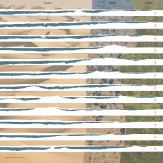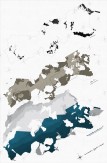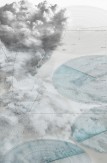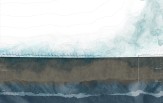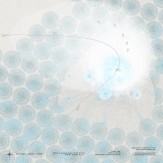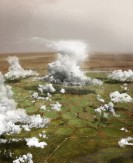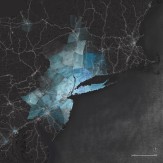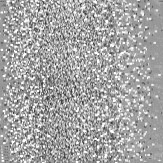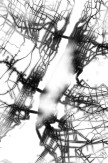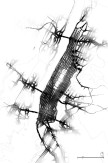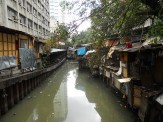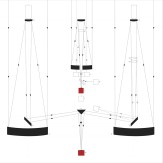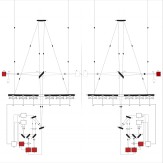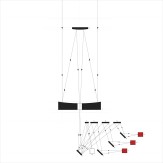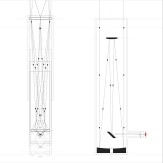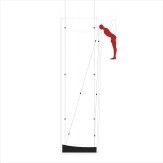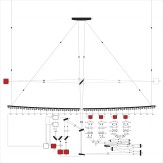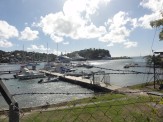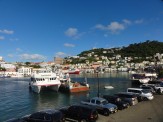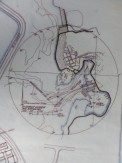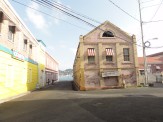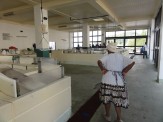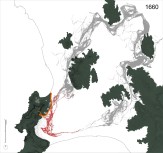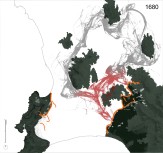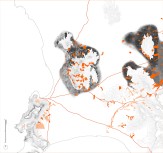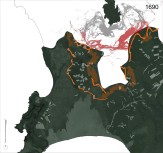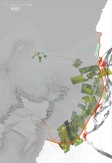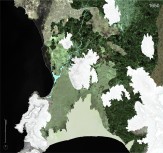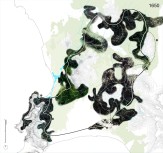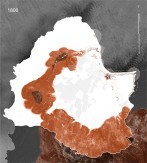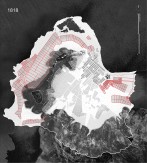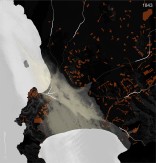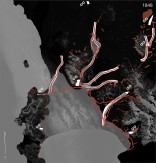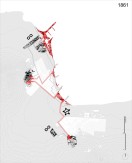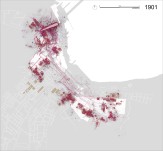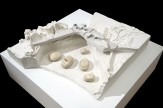Master of Architecture II Thesis 2013

Expanding Boundaries
This is a critical moment for the re-thinking of the object of architecture with a critical approach to architectural discourse, questioning the very boundaries of architecture itself. The work produced in the Advanced Design Studio studio, while exploring specific problems, simultaneously addresses the question of the place and relevance of the problem within architectural discourse.
Without prescribed boundaries, the projects address a myriad of critical issues affecting architectural discourse, ranging from urban theory to the present condition of globalization and the continual emergence of new scientific developments and technologies. The thesis projects presented here culminate the graduates’ year-long exhaustive research, using texts, photography, drawing, technology, science and history to develop innovative programs, all of which feature configurations and narratives that bring forth potential solutions that may not be, at first, obvious to the viewer.
< Back to Selected Graduate Design Studio Projects
VIEW INDIVIDUAL PROJECTS BELOW
Projects
-

Clouds As Environment
-
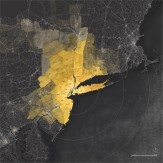
Fluctuating City
-

Mediated Visual Perception and the Transformations of the Optical Apparatus
-
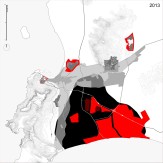
Military Urbanism
Back
Clouds As Environment
CLOUDS AS ENVIRONMENT: TRANSFORMATIONAL TOOLS
Sahel region, Sudan and Chad
Chung-Wei Lee
Leonardo da Vinci called clouds “bodies without surface.” They emerge without any omen, drift with winds and then they disappear. For me, clouds are also the architecture of nature. Underneath these white creatures is our everyday life, which they directly affect. They gather and disperse, shift up and down from here to there; they could be sunshades that protect us from sunlight or bring waters, winds and flashes of lightening to our environments. We usually treat clouds as something intangible, but they are, in fact, ultimately derived from the planet on which we live. Clouds are configured by the atmosphere, the composition and density of aerosols, various types of ground cover and human activity.
This project focuses on the south side of the Sahara Desert in the Sahel region, a narrow strip of land located between the vast, dry desert and the wet, tropical rain forest. Clouds rarely appear above Sahel, but when they do, its surface is strongly affected by their valuable rains. The fragile ecosystems of savannahs, brushlands and croplands are all dependent on the water from clouds, and they are the battlefront of the desertification of the Sahara fringe.
In a 1962 speech, Harry Wexler, head of meteorological research at the U.S. Weather Bureau, reminded other meteorologists that humankind was modifying the weather and climate “whether we know it or not.” Modern technology and research have since enabled us to understand more about these capricious clouds, but we haven’t fully explored their potentials. The aim of this project is to capture the ghostly clouds: by understanding the factors that determine their various compositions, and through examinations of the consequences of cloud modification, the built environment could play an active role in the cloud formation and change. In considering that clouds emanate from the ground, one could fantasize that clouds could literally be “built.”
Fluctuating City
Fluctuating City: The Topography of Population Activity In Manhattan
Younghae Lee
This thesis explores the dynamic population of Manhattan, which changes dramatically between day and night.
Manhattan consists of much more than its residential population and daily workforce. The city serves approximately 4 million people on a typical weekday, with a nightly population of 2.05 million. Manhattan, with a residential population of 1.6 million, more than doubles its weekday population as a result of the complex network of tunnels, bridges, railroad lines, subways, commuter railways, ferry systems, bicycle lanes and pedestrian walkways that link the island to the surrounding counties, cities and towns.
—Referenced from The Dynamic Population of Manhattan by Mitchell L. Moss
This thesis unfolds Manhattan’s various features of circulation, and how these affect the movement of the population. Ultimately, the project illustrates various readings of Manhattan through an investigation of these urban characteristics and the phenomena of the city.
Mediated Visual Perception and the Transformations of the Optical Apparatus
Mediated Visual Perception and the Transformations of the Optical Apparatus
Astronomical Observation Through Telescopes
Adam Longenbach
This thesis questions visual perception where vision is mediated by representations and images are created by an optical apparatus. This study seeks to articulate and explore questions of mediated vision by focusing specifically on the telescope. As an instrument of representation, the telescope uses a series of lenses and mirrors to allow objects otherwise too distant, too faint and too massive for direct observation to become captured, scaled down and translated into analyzable images of record. Thus, cosmology is a profession where perception occurs only through layers of simulacra, rather than through direct engagement with the objects themselves.
In architecture, the role that representation and images (drawings, photographs and renderings) play in informing and impeding our perception of places and objects – especially and specifically when they are the only means of such perception – raises important questions about what is gained or lost in such mediative layers. Fundamentally, what issues underlie an understanding of a sensual experience where the perception of an object privileges vision over our other senses? What are the limitations of representing an observed object, and at what point does representation transition from being a tool for cognition and imagination to being a veil between subject and object? How does a lack of physical proximity mitigate our ability to perceive objects, and if visual perception, particularly through images, is increasingly what we seek, then what is increasingly absent from what we find? Lastly, as increasingly larger telescopes are built to see deeper into an infinitely large universe, where are the outer limits of not only our ability to represent what we observe, but of human perception in general?
Military Urbanism
Military Urbanism:
The City as Enactment of Segregation: Cape Town, South Africa
Stefan van Biljon
This project represents an attempt to unearth the unconscious of Cape Town's urban divisions. The scars of apartheid-era social engineering (strong spatial and economic discontinuities) are poignant reminders of Cape Town's troubled past. With the enactment of the Group Areas Act in 1950, South African cities were carved into racially segregated sectors. Urban planning was used as a scalpel to cut the city into the image of a nationalist government.
Apartheid however, was no isolated project. Long before bulldozers bit the soil, the lines dividing Capetonians from the elements – and one another – were drawn in the sand. The idea that the city's fractured character is rooted as much in the soil, as it is in social dynamics, is this project's point of departure.
Some of the earliest human civilizations lived within sight of Cape Town's Table Mountain. Colonial land appropriation displaced the nomadic Khoikhoi's seasonal transhumance, eroding an animistic connection to the landscape. Instead, landscape was turned into a weapon, and implicated in an incipient tradition of ethnic and economic segregation. An outpost that started as a 17th Century refreshment station for ships en route to the East grew into a colony, and eventually a nation. Cape Town changed hands between colonial powers, subjecting former masters, in turn, to systematic marginalization and elimination.
A post-apartheid crime wave has led to the increased fortification and privatization of the city's more affluent spaces. This is fuelled by polarized investment. These developments have dovetailed with a heightened global security awareness. What emerges is a distinct form of militarized urbanism with global resonances.








